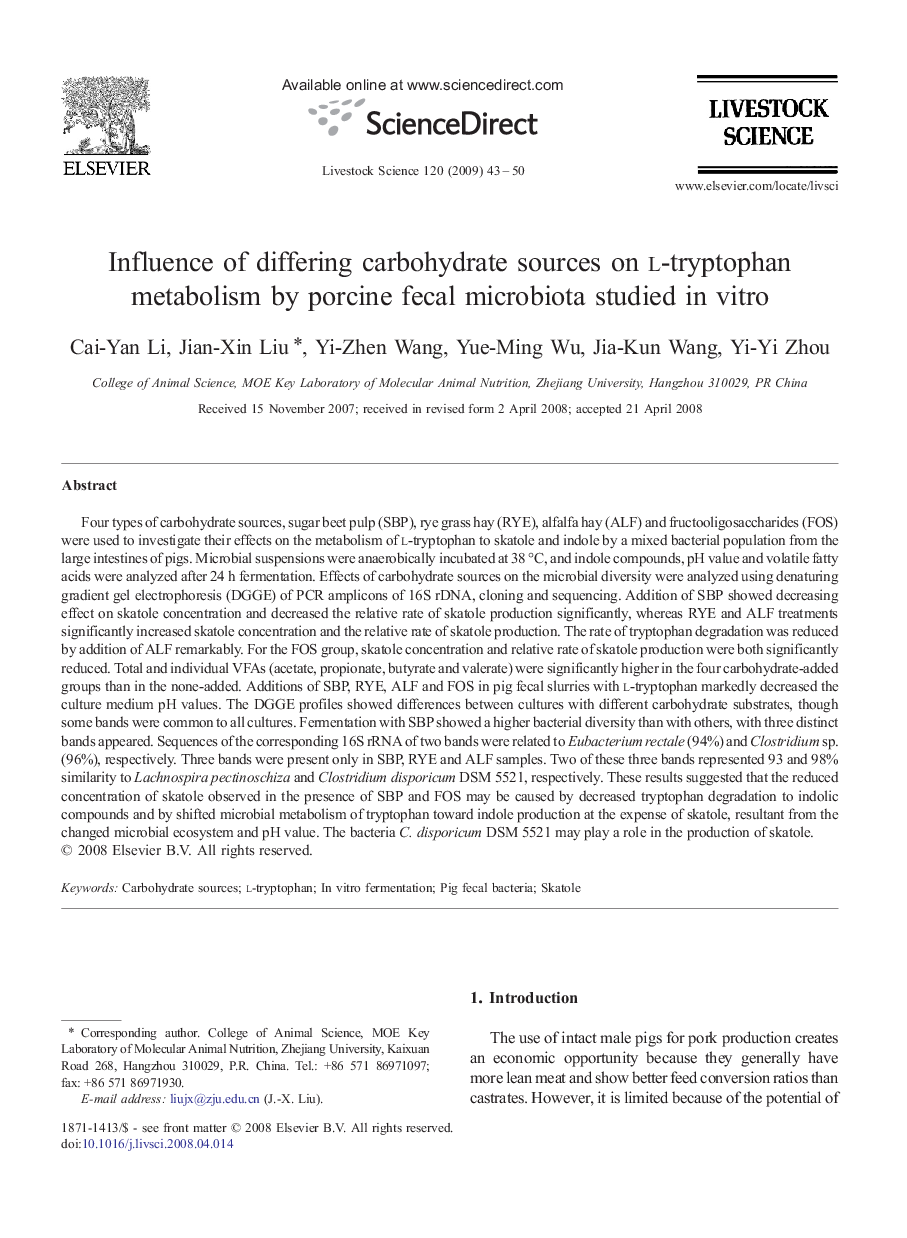| کد مقاله | کد نشریه | سال انتشار | مقاله انگلیسی | نسخه تمام متن |
|---|---|---|---|---|
| 2448331 | 1554013 | 2009 | 8 صفحه PDF | دانلود رایگان |

Four types of carbohydrate sources, sugar beet pulp (SBP), rye grass hay (RYE), alfalfa hay (ALF) and fructooligosaccharides (FOS) were used to investigate their effects on the metabolism of l-tryptophan to skatole and indole by a mixed bacterial population from the large intestines of pigs. Microbial suspensions were anaerobically incubated at 38 °C, and indole compounds, pH value and volatile fatty acids were analyzed after 24 h fermentation. Effects of carbohydrate sources on the microbial diversity were analyzed using denaturing gradient gel electrophoresis (DGGE) of PCR amplicons of 16S rDNA, cloning and sequencing. Addition of SBP showed decreasing effect on skatole concentration and decreased the relative rate of skatole production significantly, whereas RYE and ALF treatments significantly increased skatole concentration and the relative rate of skatole production. The rate of tryptophan degradation was reduced by addition of ALF remarkably. For the FOS group, skatole concentration and relative rate of skatole production were both significantly reduced. Total and individual VFAs (acetate, propionate, butyrate and valerate) were significantly higher in the four carbohydrate-added groups than in the none-added. Additions of SBP, RYE, ALF and FOS in pig fecal slurries with l-tryptophan markedly decreased the culture medium pH values. The DGGE profiles showed differences between cultures with different carbohydrate substrates, though some bands were common to all cultures. Fermentation with SBP showed a higher bacterial diversity than with others, with three distinct bands appeared. Sequences of the corresponding 16S rRNA of two bands were related to Eubacterium rectale (94%) and Clostridium sp. (96%), respectively. Three bands were present only in SBP, RYE and ALF samples. Two of these three bands represented 93 and 98% similarity to Lachnospira pectinoschiza and Clostridium disporicum DSM 5521, respectively. These results suggested that the reduced concentration of skatole observed in the presence of SBP and FOS may be caused by decreased tryptophan degradation to indolic compounds and by shifted microbial metabolism of tryptophan toward indole production at the expense of skatole, resultant from the changed microbial ecosystem and pH value. The bacteria C. disporicum DSM 5521 may play a role in the production of skatole.
Journal: Livestock Science - Volume 120, Issues 1–2, January 2009, Pages 43–50